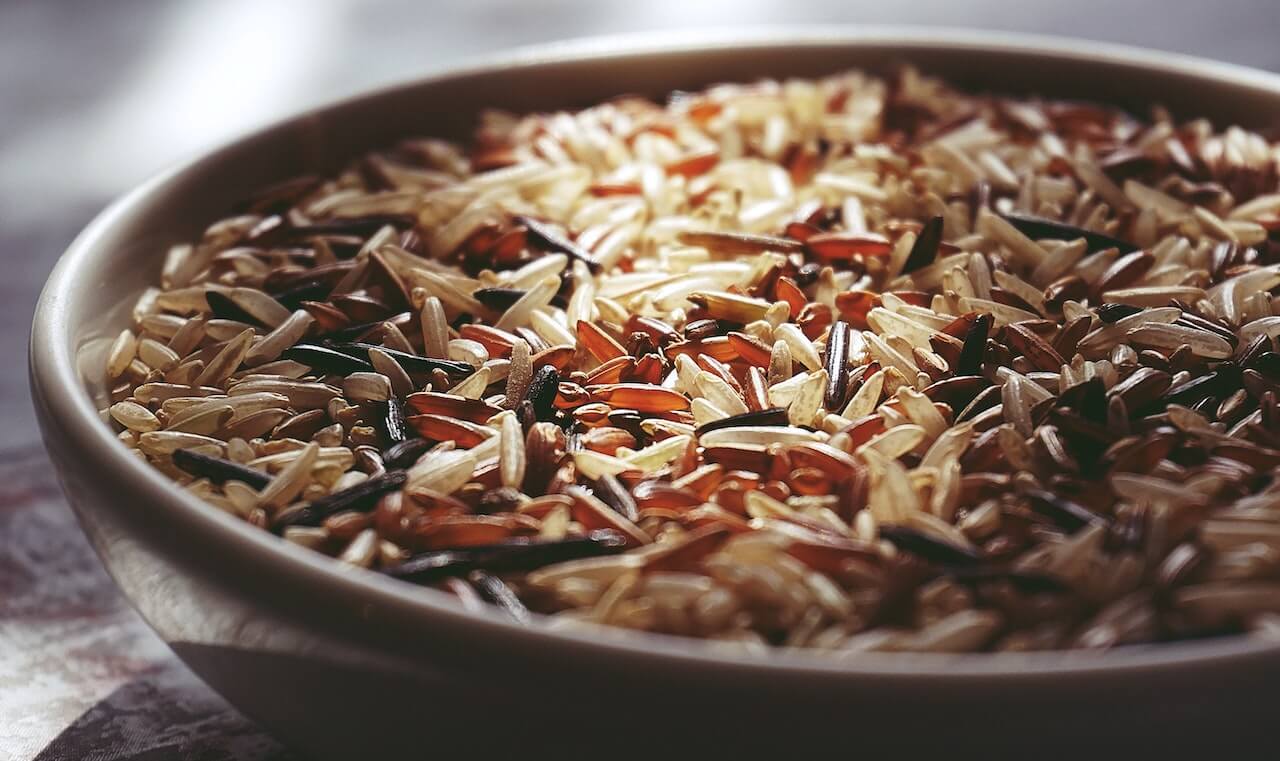You have likely heard of intermittent fasting. This eating trend has gained popularity over the past ten years but has been used since the 1960s as a successful diet for people with obesity and related complications. However, fasting intermittently for healthy and religious reasons has been practiced for thousands of years.1
There is no one perfect way to eat. Every person is unique. Intermittent fasting can be beneficial for some. However, people with certain medical conditions need to practice intermittent fasting safely. Glucose levels could go too low for individuals living with diabetes. For others, intermittent fasting may not fit their lifestyle, or they may want to eat socially during fasting periods.
This article overviews intermittent fasting and how it differs from other diets and reviews its health benefits. You will also learn what is allowed during a fast, how to eat after a fast, and if intermittent fasting can be helpful for you.

What is Intermittent Fasting?
Intermittent fasting is when someone consumes very little or no calories for specific periods. Fasting time frames or fasting windows typically range from 12 to 16 hours of fasting daily or fasting the entire day (24 hours) two times a week. Typically, in a fasting window, calorie consumption is restricted entirely or reduced to 25 percent of a person’s average daily calorie intake.1
Generally, non-calorie beverages, like water or coffee, are allowed during fasting periods.
Fasting windows can be customized to a person’s individual preference. Intermittent fasting is flexible regarding when you set your fasting window. Some people fast primarily in the morning and eat from 1 pm until 7 pm. When a person is in a non-fasting time or eating window, there are minimal rules regarding how much or what types of food are consumed.
Intermittent Fasting vs. Diets: What’s the Difference?
Time-restricted eating or intermittent fasting can be a liberating way for someone to make lifestyle changes and lose weight with less restriction on the type of foods or daily calorie intake. They primarily focus on keeping the fasting and eating windows, then consume whatever food and beverages with calories during the eating window.
Traditional calorie-restricted diets recommend a daily 500 to 750-calorie restriction to achieve a weight loss of one to one and a half pounds per week. Most calorie-restricted diets result in a 5 to 10 percent weight loss after one year, which allows for positive changes in metabolic health. Unfortunately, many of those following calorie-restricted diets tend to regain weight within a few years. After five years, the average individual has lost 6 pounds and about 3 percent of their initial body weight.2
Intermittent fasting is an alternative way for people to lose comparable amounts of weight to traditional calorie-restricted diets. Reviews of eleven randomized trials of at least eight weeks following intermittent fasting in overweight or obese adults found equivalent weight loss in 9 of the 11 studies.2
Intermittent fasting focuses on when you eat, whereas regular diets focus on what you eat. There are no off-limit foods. For individuals who have struggled with food restrictions or are unwilling to eliminate certain foods, simply following fasting and eating windows can be an effective tool for weight loss.
<p class="pro-tip"><strong>Learn more: </strong> <a href="/blog/low-blood-pressure-fasting">How Intermittent Fasting Can Lead to Lower Blood Pressure</a>.</p>
Health Benefits of Intermittent Fasting
- Aids in weight loss
Many systematic reviews and research have demonstrated that intermittent fasting is as effective as traditional calorie-restricted diets for weight loss.1,2 In 27 studies examined, weight loss occurred, ranging from 0.8 to 13 percent of initial body weight.3 Some research among people living with type 2 diabetes shows greater weight loss in intermittent fasting.4
Intermittent fasting restricts your calorie intake since eating windows are limited. This puts a person into a calorie deficit. Repeated calorie deficits turn into weight loss. Approximately 3,500 calories equals one pound. As a person reaches that calorie deficit, they will continue to lose weight.
- Lowers blood sugar and metabolic syndrome risk
Metabolic syndrome is a grouping of health conditions that increase the risk for type 2 diabetes, heart disease, and stroke. Markers include increased blood sugar and blood pressure, excess body fat around the waist, and elevated cholesterol and triglyceride levels.
Small studies ranging from 12 to 250 participants indicate intermittent fasting helps people lose weight and lower insulin levels, blood pressure, glucose levels after eating, triglyceride levels, cholesterol levels, and waist circumference.1
These improvements show that weight loss helps control blood sugar and metabolic risk. Further changes in diet to optimize nutrition consumed during the eating window can further improve these chronic health conditions.
- Regulates appetite
An extensive review of 27 studies found that hunger symptoms remained stable or lower, with intermittent fasting resulting in weight loss.3
Feelings of hunger when restricting calories can be a barrier to weight loss. Experiencing repeated feelings of hunger can lead to uncontrolled eating. Willpower is only adequate for a short amount of time. Eating plans and diets that do not cause excessive hunger are realistic long-term solutions.
- Lowers blood pressure
Blood pressure usually increases as weight increases. Intermittent fasting helps achieve weight loss and improvements in blood pressure.1 Other diets like the DASH diet or Mediterranean Diet help lower blood pressure based on the type of foods eaten. Pairing intermittent fasting with other well-researched diets could further lower blood pressure.
- It’s a versatile diet.
Individuals can focus primarily on when they can eat and wait to change what they eat. Gradual changes are effective for making a lifelong impact.
When ready, intermittent fasting can easily be combined with various healthful eating methods such as more plant-based foods, counting macronutrients, or avoiding food allergens and intolerances. You can pair almost any eating plan with intermittent fasting.
- It’s sustainable
For many, following a strict diet into the foreseeable future sounds daunting and unrealistic. Intermittent fasting reduces the eating window and decision fatigue when planning meals and snacks.
Intermittent fasting does not require counting calories, carbohydrates, protein, fat, or food groups. This simpler eating method is a good alternative for individuals wanting to lose weight. The eating window can be catered to individual schedules and preferences.
4 Types of Intermittent Fasting
- Time-restricted eating (the 16/8 method)
As one of the most popular fasting methods, this method involves fasting daily for 16 hours and then an 8-hour eating window.4 Many people eat two to four times during this window. With time-restricted eating, no foods are eaten, and only non-calorie beverages are consumed during the fasting window. This method can be altered to 18/6 or 20/4.
- The twice-a-week method (the 5:2 method)
This method involves eating your regular diet five days a week and then reducing calorie intake on two non-consecutive days. Many people eat about 25 percent of their usual amount (about 500 calories) on fasting days.1,4 This method differs in that you eat whenever you want on the fasting days but eat significantly less. The method can be modified to a 4:3 method (four regular intake days and three reduced intake days).4
- The 24-hour fast 1-2 times per week
This method includes fasting 24 hours at a time, usually once or twice weekly on non-consecutive days. People can eat as desired on eating days.
- Alternate day fasting
Individuals fast every other day of the week. This includes no food and only non-calorie drinks for 24 hours. No changes are made to eating days.4
There are many ways to structure intermittent fasting. It varies between daily fasting and eating windows or by specific days of the week. You can pick which fits your lifestyle best.
{{mid-cta}}
What Can You Consume When Fasting?
Only beverages with no calories should be consumed to maintain a fasted state.
- Water: opt for plain and carbonated water to stay hydrated during a fast.
- Tea: no cream, sugar, or milk additions allows you to drink tea during a fasting window.
- Black coffee: no cream, sugar, or milk maintains a fast due to no calories in coffee. Other spices, such as cinnamon, could be added.
What About Supplements?
A fasted state can start after 12 hours of not eating. This occurs after muscle and liver glycogen stores are depleted, and the body uses stored fat and protein as energy sources.5 If you eat, this process is halted, and the food will be digested and made into an energy source. Certain supplements can break your fast and should be avoided.
Supplements containing calories, carbohydrates, protein, and sugar would break a fast and switch your body from using stored nutrients to the nutrients you consumed. During a fasting window, it is essential to maintain no calorie intake.
Below are some supplements that break a fast and those that are generally considered fine to ingest during a fasting window. Check the supplement nutrition label for any calories, carbohydrates, protein, and sugar to determine if the supplement should be taken during the eating or fasting window.
Supplements likely to break a fast
- Protein powder
- Gummy vitamins
- Branched-chain amino acids (BCAAs)
- Any supplement containing sugar
Supplements not likely to break a fast
- Creatine
- Probiotics and prebiotics
- Collagen
- Individual micronutrients
- Fish or algae oil
What to Eat After Fasting
As you break a fast, start with easier-to-digest foods. You might be tempted to eat a high-fat meal like pizza. Too much fat, fiber, and sugar can cause digestive issues and make you feel sluggish.
Choosing whole foods in smaller portions will help you transition to eating again. Try incorporating a lean protein source like fish, eggs, or chicken with whole grain and cooked vegetables. Smoothies and soup can be a gentle option as liquids are lower in fiber and digested faster than solid foods.
- Soup
- Vegetables
- Healthy fats
- Smoothies
- Yogurt
- Dried fruits
- Lean proteins
- Whole grains

Common Misconceptions About Fasting
- Bone broth is good to drink when fasting.
Bone broth contains calories and protein. If you follow a method where no calories are eaten during fasting, bone broth will break your fast. Bone broth would be a good option on fasting plans with reduced calorie intake for one or two days per week.
- You can drink diet sodas while fasting.
Diet sodas contain calorie-free artificial sweeteners. Technically, diet sodas (and other diet drinks) will not break a fast. However, artificial sweeteners may change gut bacteria and lead to decreased sensation of fullness.6 This may make individuals want to eat during a fast.
- Fasting slows down your metabolism.
Metabolism is all the processes in your body to keep you alive. Fasting changes the energy source for these life-giving processes. During fasting, more stored fat and protein are used as a fuel source instead of glucose from carbohydrates. No significant changes in metabolism rates (how much energy is needed at a resting state) were seen with intermittent fasting.7
- You will have no energy if you fast.
It takes time to adapt to any new routine or life change. Intermittent fasting is no different. Some people feel tired from the lower glucose intake during fasting windows. Research shows most people reported no increase in fatigue or tiredness after following intermittent fasting at a 6-month follow-up.3
<p class="pro-tip"><strong>Keep reading: </strong> <a href="/blog/keto-intermittent-fasting">Keto and Intermittent Fasting: Does it Work?</a>.</p>
Learn More About Healthy Nutrition with Signos’ Expert Advice.
Learning to follow a new diet takes time. Every person responds differently to a new diet. Some people may thrive with intermittent fasting, whereas others find this eating style does not work for them.
A continuous glucose monitor (CGM) can help you know how your body responds to different foods and meal combinations.
Curious to see how Signos works and can help you? A Signos’ CGM can help you improve your health. Take a quick quiz to determine if Signos is a good fit for you.
- Item 1
- Item 2
- item 3
































